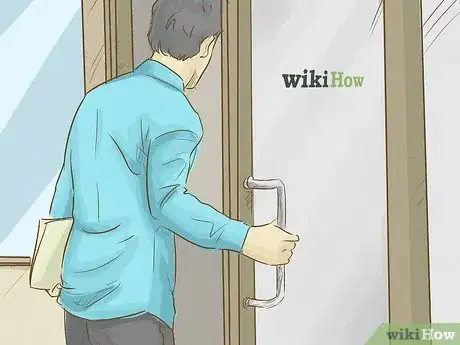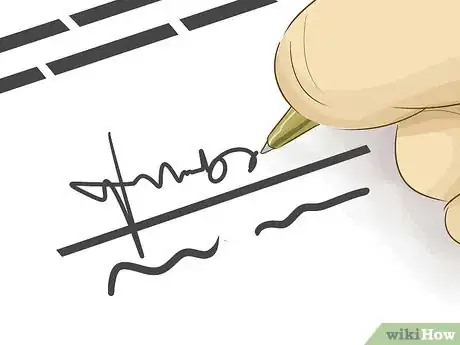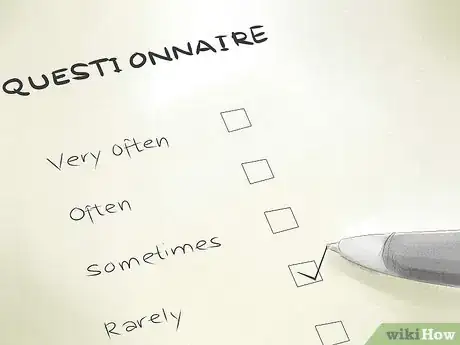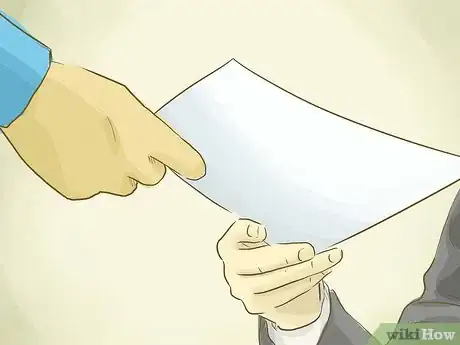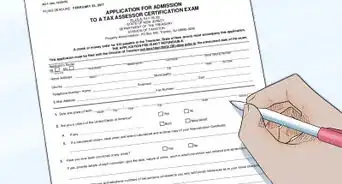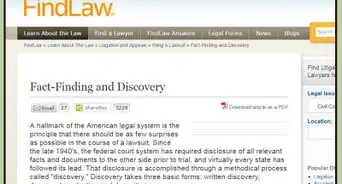This article was co-authored by Clinton M. Sandvick, JD, PhD. Clinton M. Sandvick worked as a civil litigator in California for over 7 years. He received his JD from the University of Wisconsin-Madison in 1998 and his PhD in American History from the University of Oregon in 2013.
wikiHow marks an article as reader-approved once it receives enough positive feedback. In this case, 91% of readers who voted found the article helpful, earning it our reader-approved status.
This article has been viewed 97,473 times.
A quitclaim deed transfers interest in real property to someone else. The person who transfers the property is known as the “grantor” while the person who receives the interest is a “grantee.” The difference between a quitclaim deed and other deeds (such as a “warranty deed”) is that the quitclaim deed does not make any promises about the property. This means that the person transferring the property is not warranting anything apart from giving up their own or potential rights to the property.[1]
Steps
Preparing to File the Quitclaim Deed
-
1Ask the current owner for a copy of the deed. To complete a quitclaim deed, you will need the original deed to the property. Ask the current owner for a copy. If you are the current owner, then go through your records and see if you have a copy.
-
2Visit the County Recorder or Clerk. If the owner does not have the deed, then you can get a copy from the County Recorder or the Clerk’s office. Depending on the office, you may be charged a fee for each page. The fee will vary depending on the county, but generally ranges from $1 to $12 for the first page and $1-3 for each additional page. In Sacramento County, you can get a copy for $1 a page.[2] In San Bernardino County, you can expect to pay $12 for the first page and $1 for any additional pages.[3]
- You can find the appropriate office by visiting this list.
Advertisement -
3Find the legal description of property. Once you locate the current deed, you should find the legal description of property. You will need this information when completing the quitclaim deed. The legal description of property should be under the words “Legal Description” or just “Description.” There are generally two types of legal descriptions:
- Subdivision description. If the property is part of a subdivision, then the legal description on the deed will list the name of the subdivision and the lot number. You may find the plat map for the subdivision in the same county office.
- Metes and bounds. This description situates the property according to points of reference, such as landmarks. A metes and bounds description will often tell a person where to begin and then where to go to walk off the property’s boundary. For example: “Commencing at the intersection of the west line of Hampton Road and the north line of Thompson Lane; thence west 200 feet along the north line of Thompson Lane, ….”
-
4Seek legal assistance, if necessary. If you think that you need assistance, or if you have questions about a quitclaim deed, then you should contact an attorney. You may not want to file a quitclaim deed. If you are unsure, talk it over with an attorney.
- You can find a qualified attorney through the State Bar of California’s Lawyer Referral Service, which is available here. This website will connect you to different referral services in different California counties. Click on your county to find the contact information for your specific referral agencies.[4]
- You can also visit LawHelpCalifornia.org, which helps people with low or moderate incomes find legal information and legal aid programs.
Filing a Quitclaim Deed
-
1Get a form. Your county Recorder’s office should have a quitclaim form for you to pick up. Additionally, one may be posted on the website. For example, the San Diego County Clerk’s office provides a blank quitclaim deed form at https://arcc.sdcounty.ca.gov/Documents/QD.pdf.
-
2Fill out the form. Complete the form using a typewriter or by printing neatly using black ink. A quitclaim deed form will require the following information:[5]
- Assessor’s Parcel Number
- Document transfer tax or exemption and city tax
- names of the grantors (the current owners of the property as described on the current deed as well as the form of title or disclaiming parties)
- Names of the grantees (the new or continuing owners)
- The legal description of property as exactly described on the current deed
-
3Sign in front of a notary. Once you have completed the form, you must wait to sign it until you appear before a notary public. Notaries can be found at most courthouses and large banks. There is probably also a notary at the Recorder or Clerk’s office.
- You can also find a notary by visiting the American Society of Notaries website and using the locator service. Type in your five digit zip code number.
- Be sure to bring sufficient personal identification. A valid driver’s license or passport should be sufficient.
-
4Get a Preliminary Change of Ownership Report (PCOR). In addition to a quitclaim deed form, you will also need a PCOR. You can also get this from the county Recorder or Clerk. A PCOR is a questionnaire that asks certain information about the property, individuals involved in the transfer, the purchase price, and the terms of sale.
- An example of the form can be found here.
-
5File the forms. Take both the quitclaim deed form and the PCOR to the County Recorder or Clerk’s office and ask to file.
- You must pay a recording fee. The recording fee will vary by county, but you can expect as a range to pay between $6 and $21 for the first page and $3 for any additional page. In Sacramento County, for example, the Recorder charges $21 for the first page and $3 for each additional page for recording.[6] In Orange County, you can expect to pay $6 for the first page and $3 for each additional page.[7]
-
6Give the deed to the grantee. In some counties, you will be handed a recorded original. If so, then you can send the original to the grantee while keeping a copy for yourself. In other counties, the Recorder will mail it to the grantee at a later date.
- Be sure to keep a copy for your records. You should store it in a home safe or a safety deposit box.
References
- ↑ http://www.bankrate.com/finance/real-estate/difference-between-quitclaim-and-warranty-deeds.aspx
- ↑ http://saclaw.org/wp-content/uploads/sbs-completing-and-recording-deeds.pdf
- ↑ http://www.sbcounty.gov/arc/PublicOfficialRecords.aspx
- ↑ http://www.calbar.ca.gov/Public/LawyerReferralServicesLRS.aspx
- ↑ https://arcc.sdcounty.ca.gov/Documents/QD.pdf
- ↑ http://saclaw.org/wp-content/uploads/sbs-completing-and-recording-deeds.pdf
- ↑ http://ocrecorder.com/civicax/filebank/blobdload.aspx?BlobID=32361
- ↑ http://saclaw.org/wp-content/uploads/sbs-completing-and-recording-deeds.pdf
About This Article
If you’re transferring real property to someone else in California, you’ll need to file a quitclaim deed. You'll need both a quitclaim deed and a preliminary change of ownership report, which can be found at your county recorder's office or on their website. Once you’ve filled out the forms, you’ll need to take your quitclaim deed to your recorder or clerk's office, where you can get it notarized. Bring your original deed with you too. If you've lost the deed, you can get a copy from your county clerk. You may want to talk to a lawyer for help filing the quitclaim and to see if this is actually the best thing to do, since it might not be necessary. For more tips from our Legal co-author, including how to find your county recorder or clerk's office, read on!

